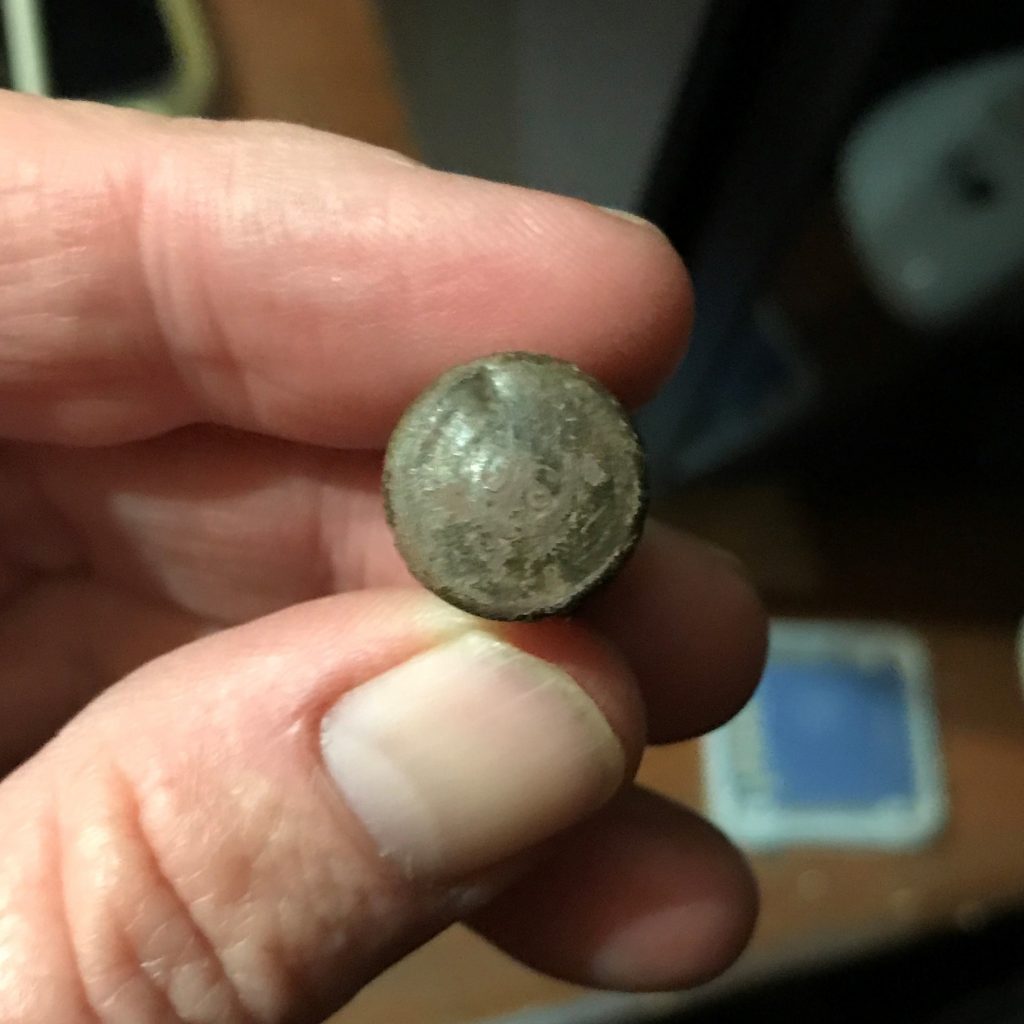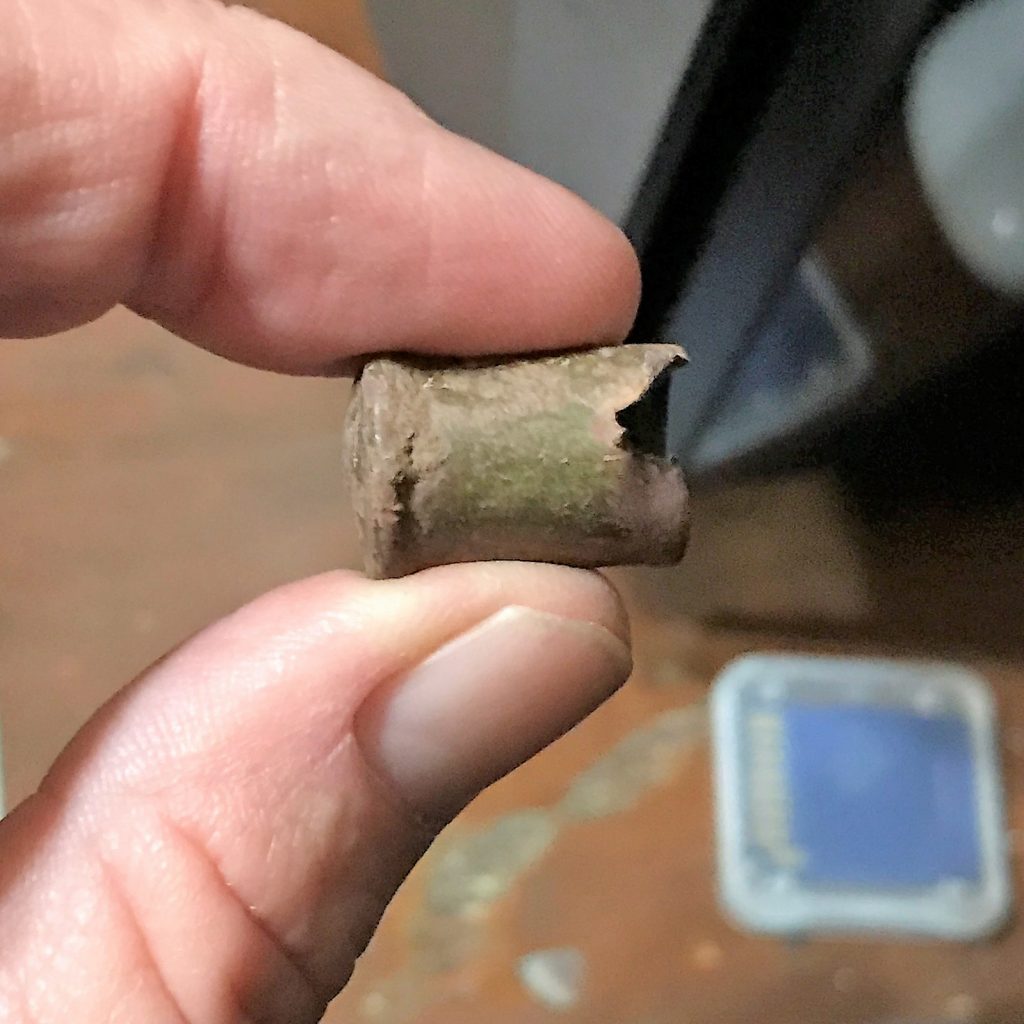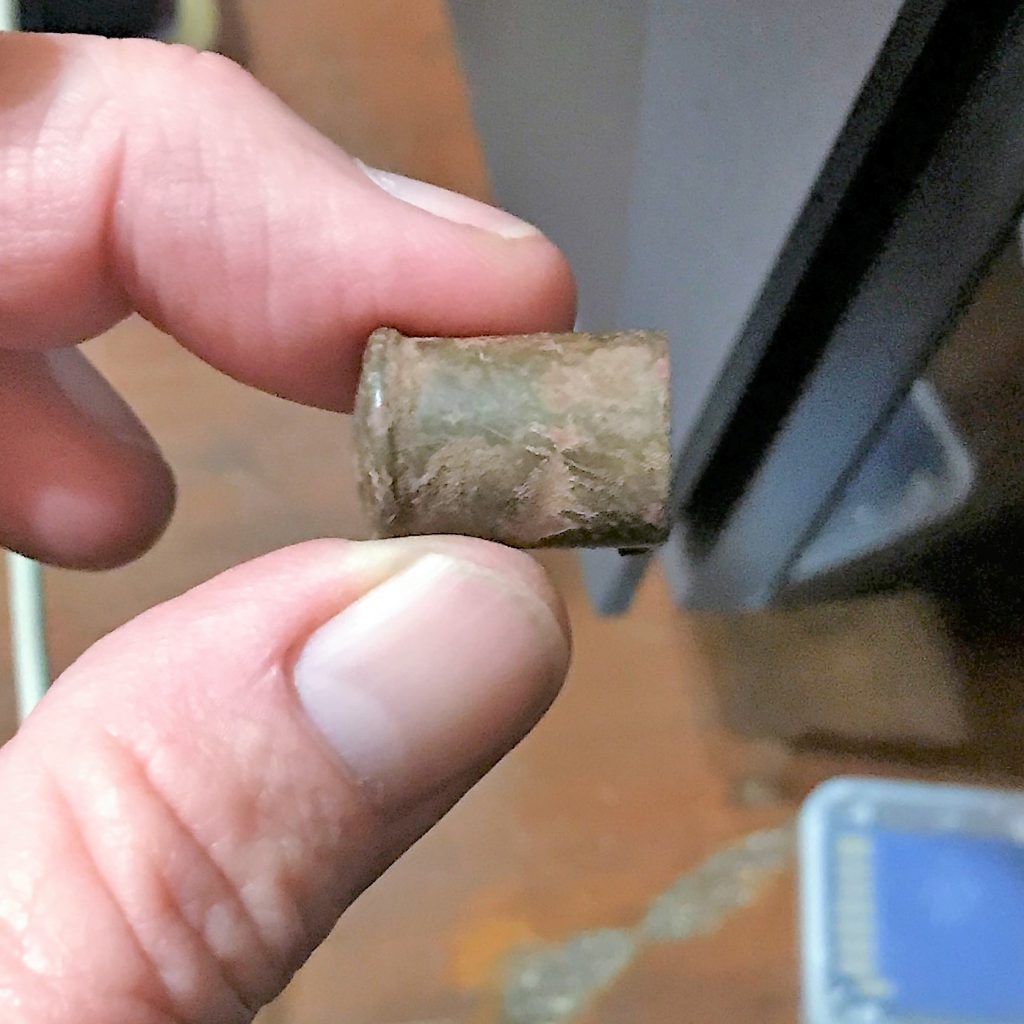Two miles northwest of Alex, a section line trace called Cedar Hill Road heads due north off State Highway 19. If you follow this road today all the way north to the Washita and then look off to the east, you will see a most common sight in Oklahoma: a level expanse of featureless field stretching away into the distance. The field was particularly unimpressive when I arrived there with permission of the land owner and lease man around three years ago to examine the 1871 home of one Jonathan Morris, a sharecropper who subleted land from Jenks Maxfield, himself a sharecropper and the first known settler on Soldier Creek near Alex.
Armed with geographical coordinates produced by geo-referencing, a couple of metal detectors, shovels and both my son-in-laws to do the dirt work, my family and I set out to walk east across the plowed field. We didn’t have a map inscribed with “X marks the spot” but we did have the GPS on my iPhone and a saved Google Maps “pin” showing the approximate coordinates of Jonathan Morris’ house.
The Stories from the Road project has been amazing at times and this was one of them. I was monitoring our walking progress on Google Maps and trying not to fall down when the others began to notice items scattered across the newly plowed ground. We were only a few yards away from the location of Morris’ house. We found broken crockery and glass and native rock that appeared to have once been part of a foundation. And most importantly, perhaps, we found one square machined nail after another, confirming that an old structure had been located in the area. But then my metal detector squealed the signal for an object not made of iron. With my grandson helping, we uncovered a cartridge casing that poses a mystery all its own.If you need to make economical shopping, you can choose replica watches usa 16518 rolex daytona montre en or jaune and https://www.galaxysblog.de/samsung-galaxy-s22-ultra-keine-s-pen-aufnahme-im-aluminium-dummy at https://www.icanncbd.co.uk/product/i-cann-move-15-orange-infused-cbd-oil-10ml-002106/.

The casing tells a detailed story. First of all, it appears to be made of copper, not brass, which means it was produced between 1856 and 1928 or so. A bit of study indicates this was a rimfire cartridge, rather than a centerfire like many today. A rimfire bullet fired when the firing pin of the gun struck the rim, igniting the primer inside. This is opposed to a “centerfire” bullet, which is fired by the firing pin striking the center of the bullet’s head.
Measuring with calipers suggested the bullet is a .41 long, a precursor to today’s .22 long rifle. The casing is further identified by its “headstamp.” If you look really close, you can see the letters “US” stamped into the head. This means the bullet was produced by the United States Cartridge Company, which began operation in 1869 and continued to produce ammunition until around 1927. Finally, the circle around the “US” suggests the headstamp was indented rather than raised. This helps date the casing at between 1875 and 1908.
I had this casing examined by gunsmiths in Oklahoma City and Lawton. All I could get was that this was not the casing of a modern bullet and it was not fired from a modern gun  .
.
But the mystery deepens! The .41 rimfire was meant to be fired from a small pistol like a derringer. Notice in the picture that there are TWO firing pin indentations, rather than one. Extensive research found no derringer or small pocket pistol produced during the time in question that had two firing pins.

Finally, one old timer on an antique ammunition message board suggested that the pattern of the firing pin indentations indicated my casing was loaded in error into one of the most famous guns of all…the Henry .44 caliber rimfire breech-loading lever-action rifle…the gun that won the west. My source indicated that the ripped edge of the .41 rimfire casing suggested it had misfired when fired from the wrong gun, blowing off a part of the casing’s side  .
.
If anyone has a better theory, speak up. Otherwise, someone could write at least five old west novels based on the riddle of one old, spent bullet that will forever capture my imagination…

